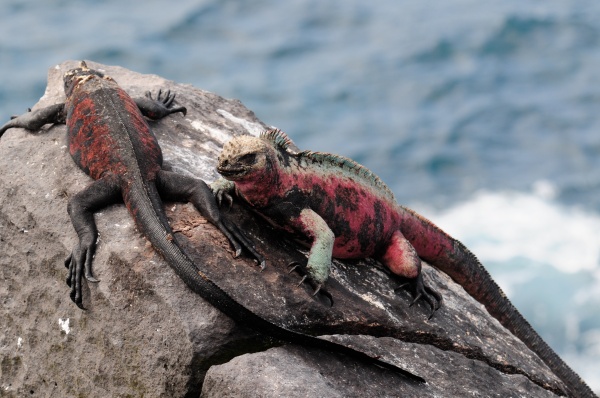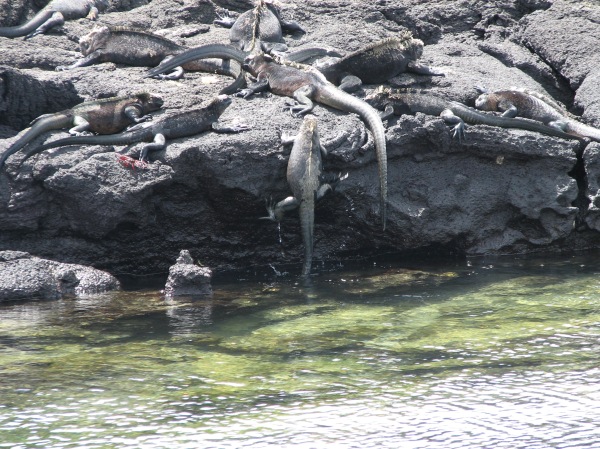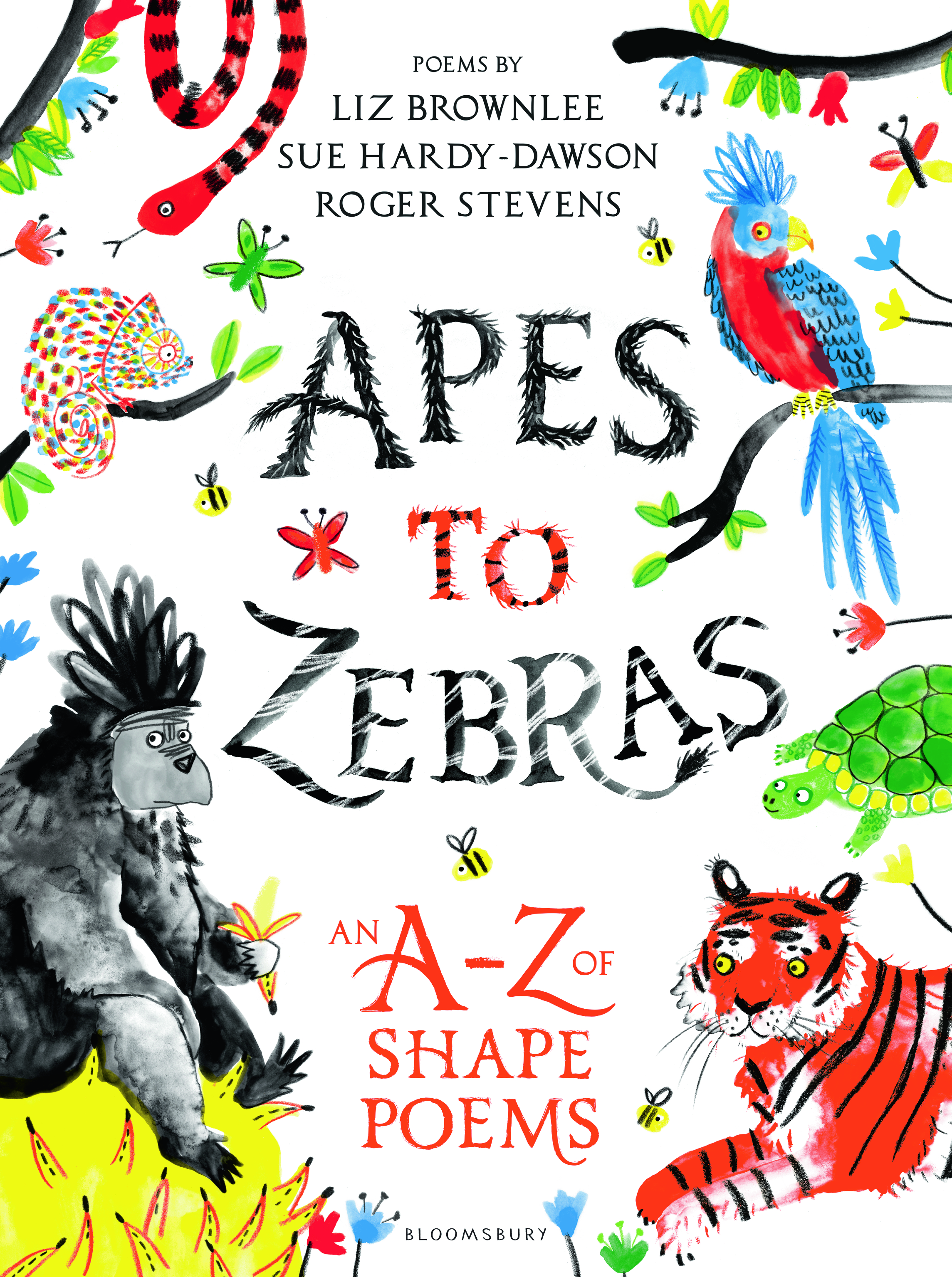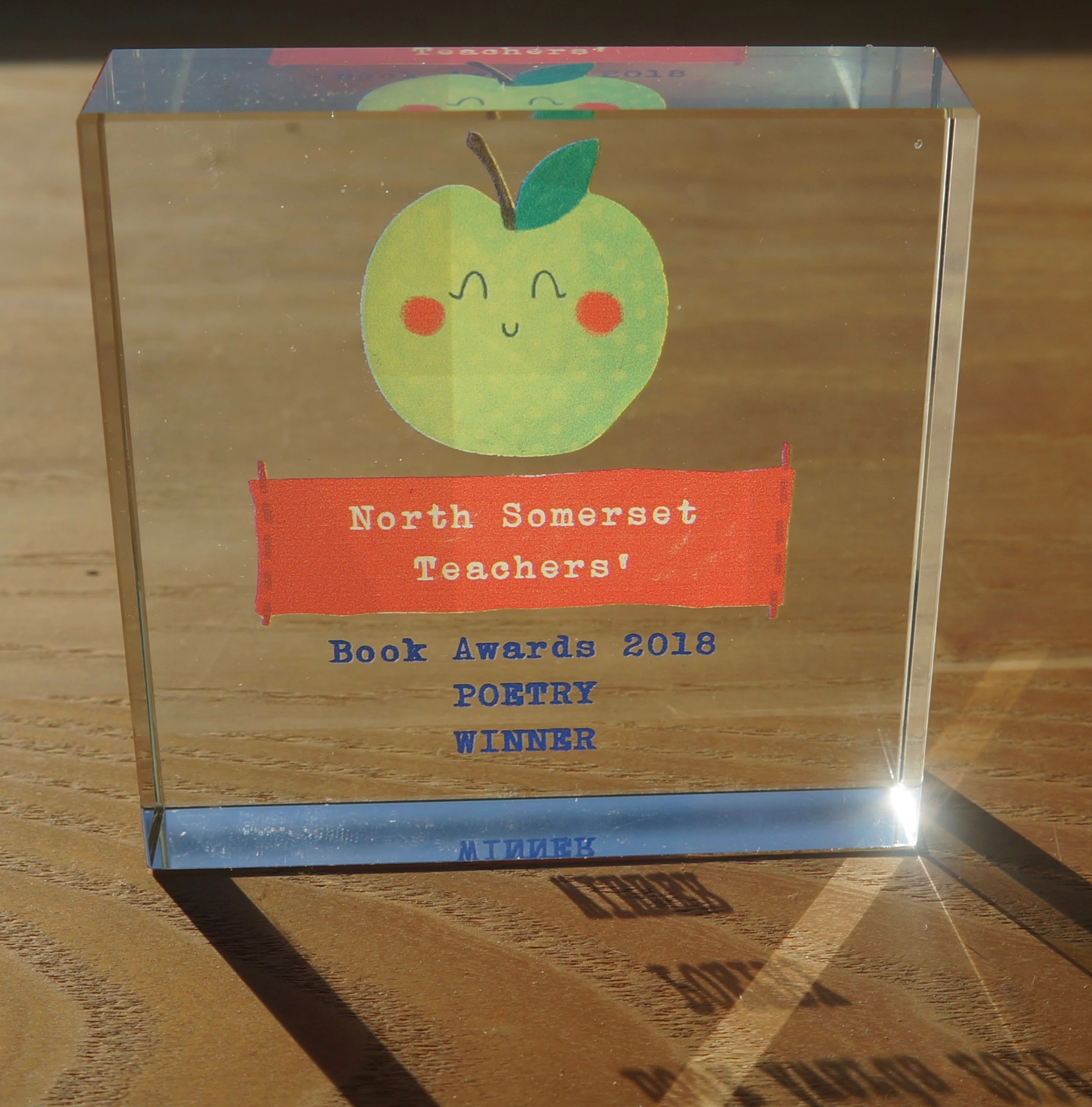M is for Marine Iguana
This wonderful image of two marine iguanas on Espanola in the Galapagos Islands was taken by Vince Smith, and is on Flikr.
Marine iguanas are fascinating animals, and there are two extraordinary facts about them.
The first is that they are the world’s only marine lizards. Because there were no mammalian predators (until more recently) they evolved a successful lifestyle and body shape to take advantage of the plentiful supply of marine algae and seaweed.
Like all reptiles, they need to be warm enough to have energy for hunting. They lie on the sun-warmed rocks – in the photo above you can see one of them flattened onto the stone, gaining as much heat as it can.
When they are as warm as the rocks are, the iguanas plunge into the sea, and arms by their sides, undulate their bodies like an eel, using their powerful tail as a rudder and for forward momentum. They are extremely powerful swimmers. But due to the Humboldt current in the Galapagos islands where they live, the sea is cold – and they soon cool down. They have to eat as much as they can as quickly as they can before returning to the rocks to start the whole process over again.
Here is an image by NH53 on Flikr of some marine iguanas climbing out of the water onto the rocks. Most of them are this greeny-grey to black colour, only turning in patches a coppery red during the mating season – but the ones from Espanola are more colourful and sometimes called ‘Christmas Tree’ iguanas because of their colouring!
Small iguanas stay in the intertidal zones and eat algae from the rocks, as they cannot survive the colder temperatures as well as the larger ones.
The top 5% only are able to plunge into the sea and remain active enough – they graze on seaweed about 5m below the surface but when large enough can go down as far as 25m to harvest the plentiful algae at that level.
During El Niño events, there is an absence of sea algae. And this, the second fascinating fact, means the iguanas become smaller.
But they don’t just become smaller! They become shorter. Incredibly, this is the only reported instance of a species’ adults having shrinking vertebrae. After the algae grows back so do they, to their former size! Throughout their lives they can shrink and grow, responding to the El Niño events and other food shortages.
Because they take in so much salt from their marine diet, these lizards have evolved a way to expel it through glands beside their nose – they sneeze it out, and because it often lands on their head they end up with fetching crusty, white hats.
The Galapagos Conservancy says they can live up to 60 years.
They are suffering predation by introduced species like rats, cats and dogs. Even with their incredible adaptation, many do succumb during the El Niño season. They are classed as Vulnerable by the IUCN Red List.
Here is my Marine Iguana poem:
.
Marine Iguana
.
The chill slows
the marine iguana
weaving
cold greens
in the twilight
of the sea
.
it climbs the water
to lie splayed,
clutching
hot rocks,
.
returning
with sun
trickling through
its fingers.
.
© Liz Brownlee
.
I’m hoping that this next link will work – it is the best footage I’ve seen of one feeding underwater:
http://www.viralvo.com/iguana/?r=jm
If you would like to blog hop to another A-Z Challenge, please use the link from the logo in the right-hand column!
.
Information from:
Top image © Vince Smith shown by Creative Commons License.
Bottom image by NH53, shown by Creative Commons License.
Prose and Poem © Liz Brownlee, all rights reserved, not to be used in any manner whatsoever without the permission of the author.
- Posted in: A-Z Blog Challenge 2016 ♦ Animal Magic - the book ♦ Animals ♦ Poems ♦ Sustainability
- Tagged: animals, Marine iguanas, nature, poems, poetry, science, sea life, sustainability, wildlife



























Amazing animals… I had no idea they could shrink! And wow on the 25m; that’s 5m less than the recreational diving limit, and weget to do it with all sorts of equipment and protection. Kudos to them!
Great post, Liz. I’m learning so much from your blog.
Guilie @ Life In Dogs (and member of co-host Damyanti’s team, D’s Company )
LikeLike
They are amazing. My husband edited a whole sequence about them for the BBC which I wanted to include but I couldn’t find it on YouTube.
LikeLike
I love their colors!
LikeLike
Red is my favourite colour on a lizard, maybe because it makes them look warmer!
LikeLike
This was such a cool read. I had no idea that they can literally shorten. They seem to be so adaptable so I hope they continue to survive despite all the issues. Not sure about the white hats:)
LikeLike
It doesn’t seem possible, does it? White is not a good colour. Shows the dirt!
LikeLike
Fabulous post, Liz. The top photo and video puts my I for Iguana post to shame! The link worked and what a superb video it is. Although I did dive in the Galapagos, I didn’t see Marine Iguanas underwater – looks like I missed something very special. Love your poem too!
Susan A Eames from
Travel, Fiction and Photos
LikeLike
Susan, your post was personal experience, which is fabulous – no shame about it, it was interesting to me! Glad you liked the poem. Pete’s really upset his marine iguana underwater film was not to be found, as he says it’s better, lol!
LikeLike
WOW! I love the red coloring and that they have salt hats!
@AllysePanaro from
The Frog Lady
LikeLike
Hi Allyse, a lot to like, isn’t there! Real characters.
LikeLiked by 1 person
They are so interesting–from a distance. I’m sure if I saw one in person I’d scream like a little girl.
Melanie Schulz from
Melanie Schulz.com
LikeLike
Hi, Melanie, nice to meet you. They are so harmless – they ignore divers, I think you would be safe! And remember, they are vegetarian!
LikeLike
I love seeing reptiles like this in their natural habitat. Your blog is lovely, I will be sure to check out all your A to Z posts!
LikeLike
Thank you so much, Grazona! Do you have a blog? If so, your address is not showing for me to visit…
LikeLike